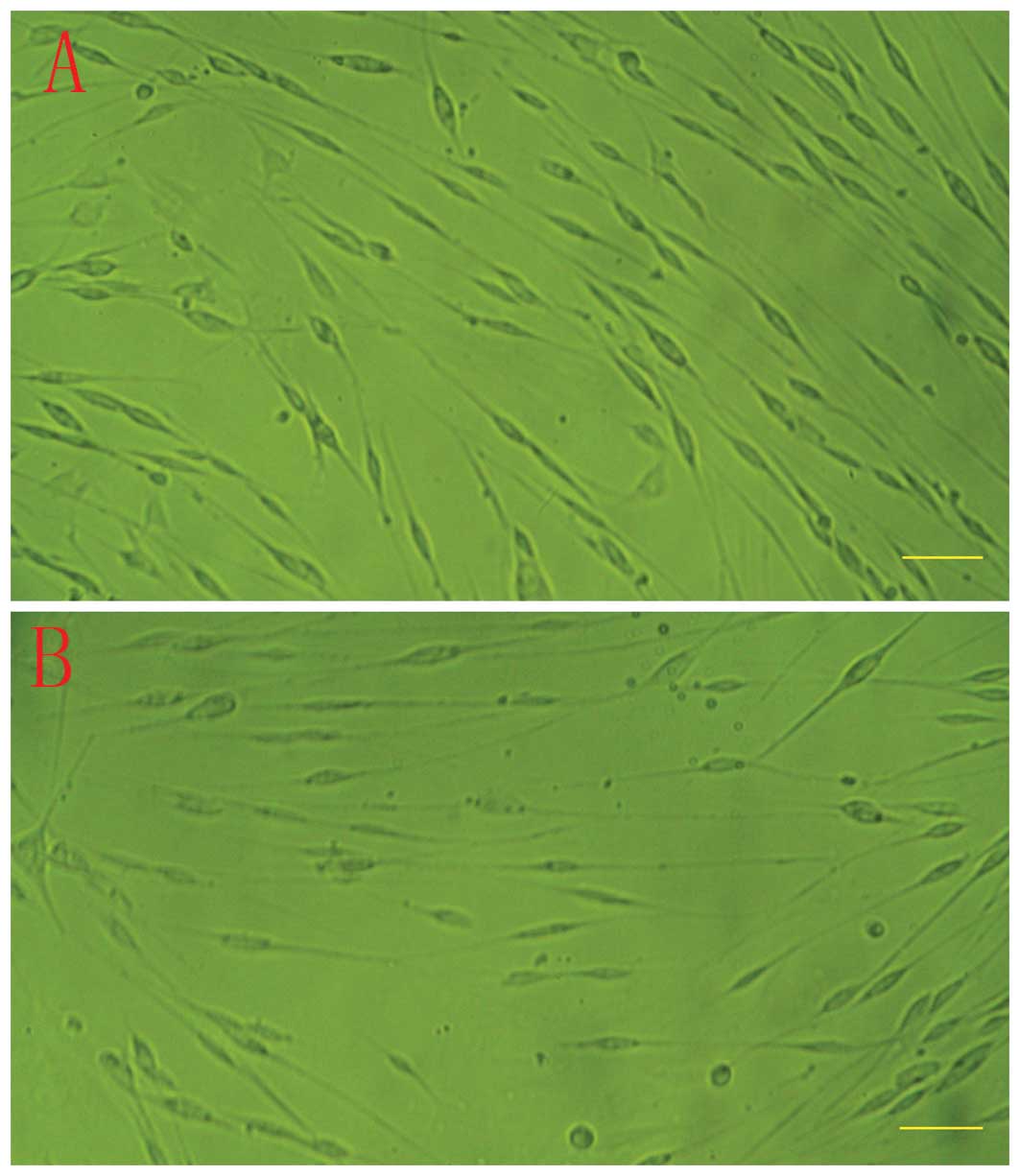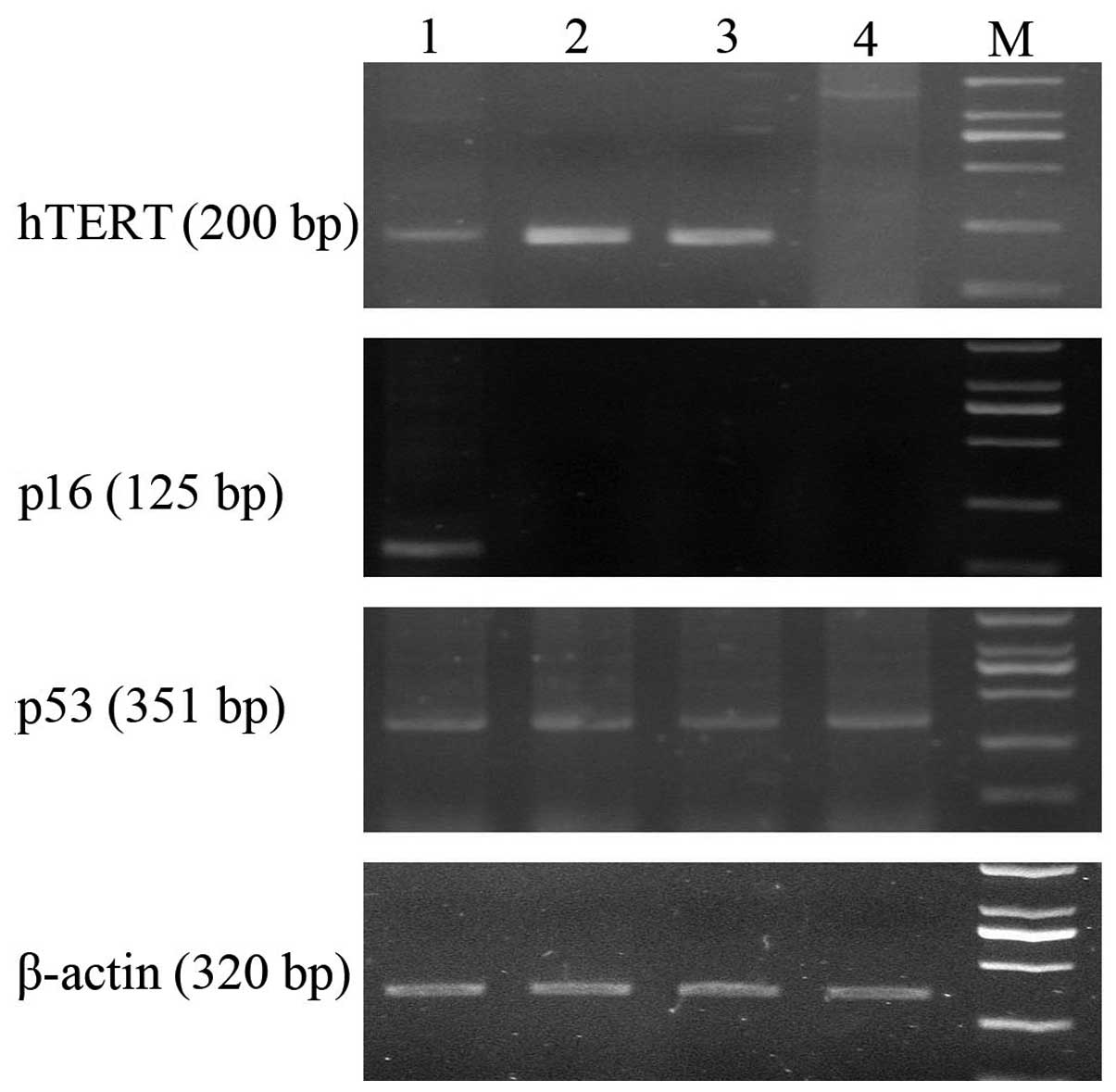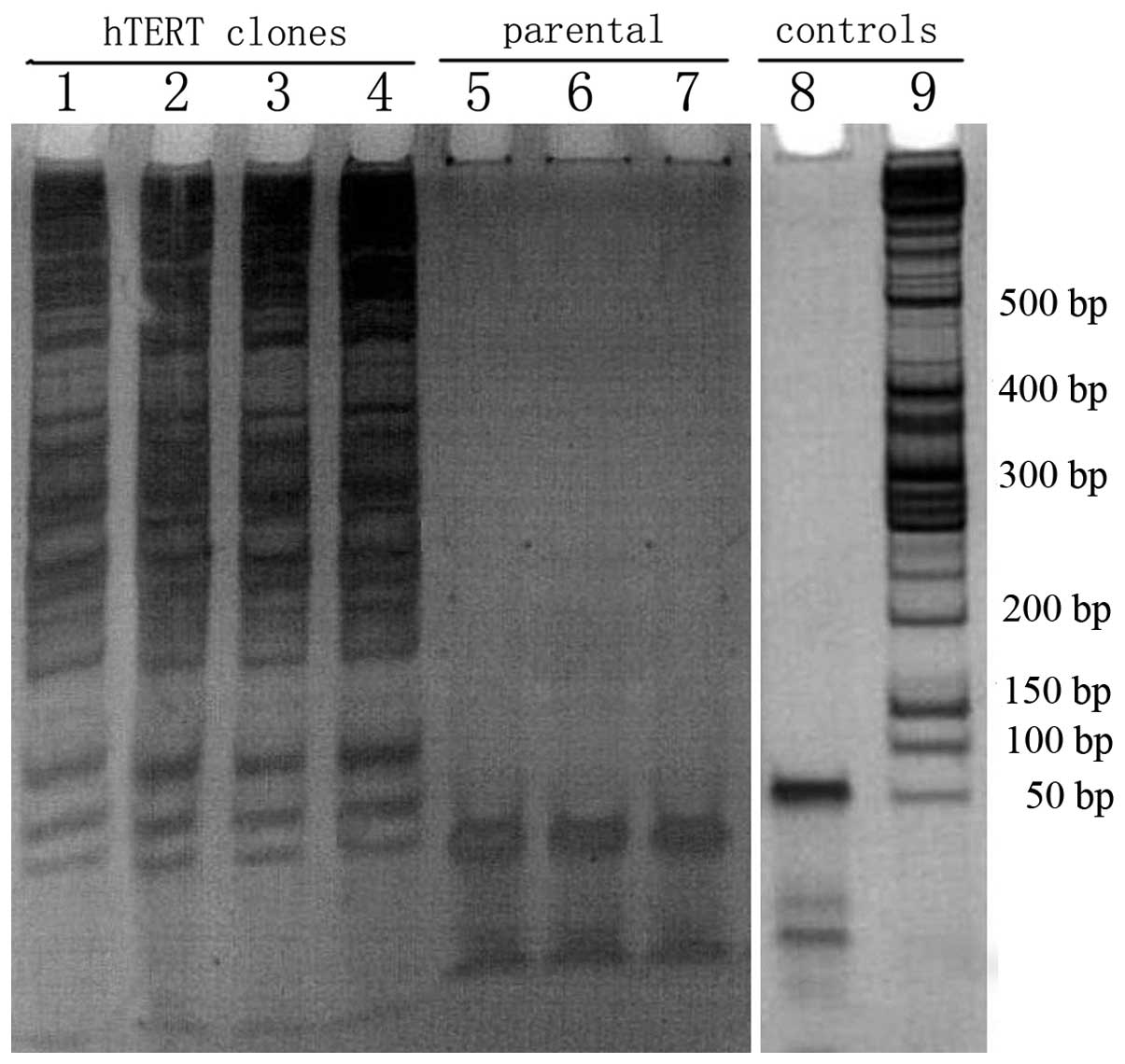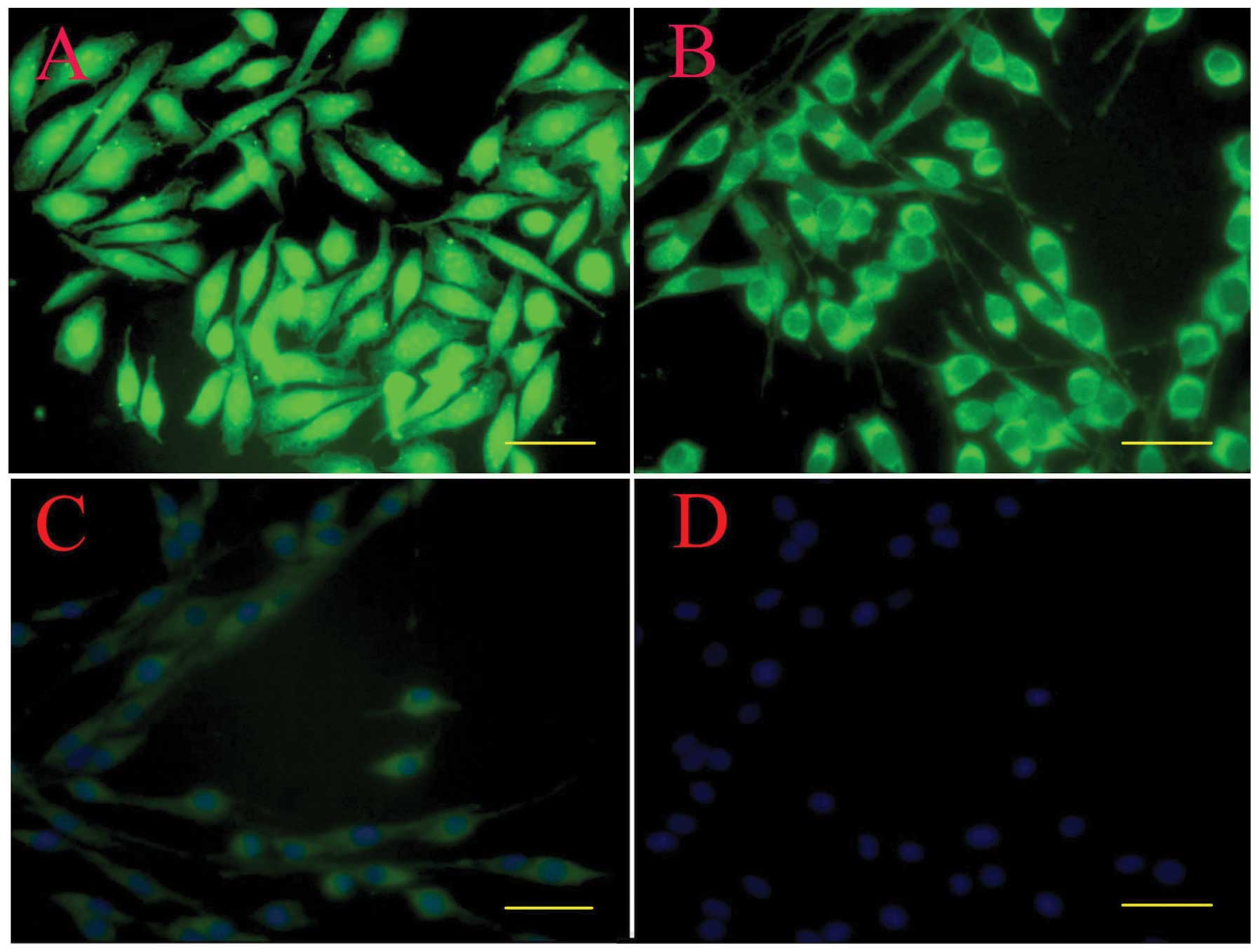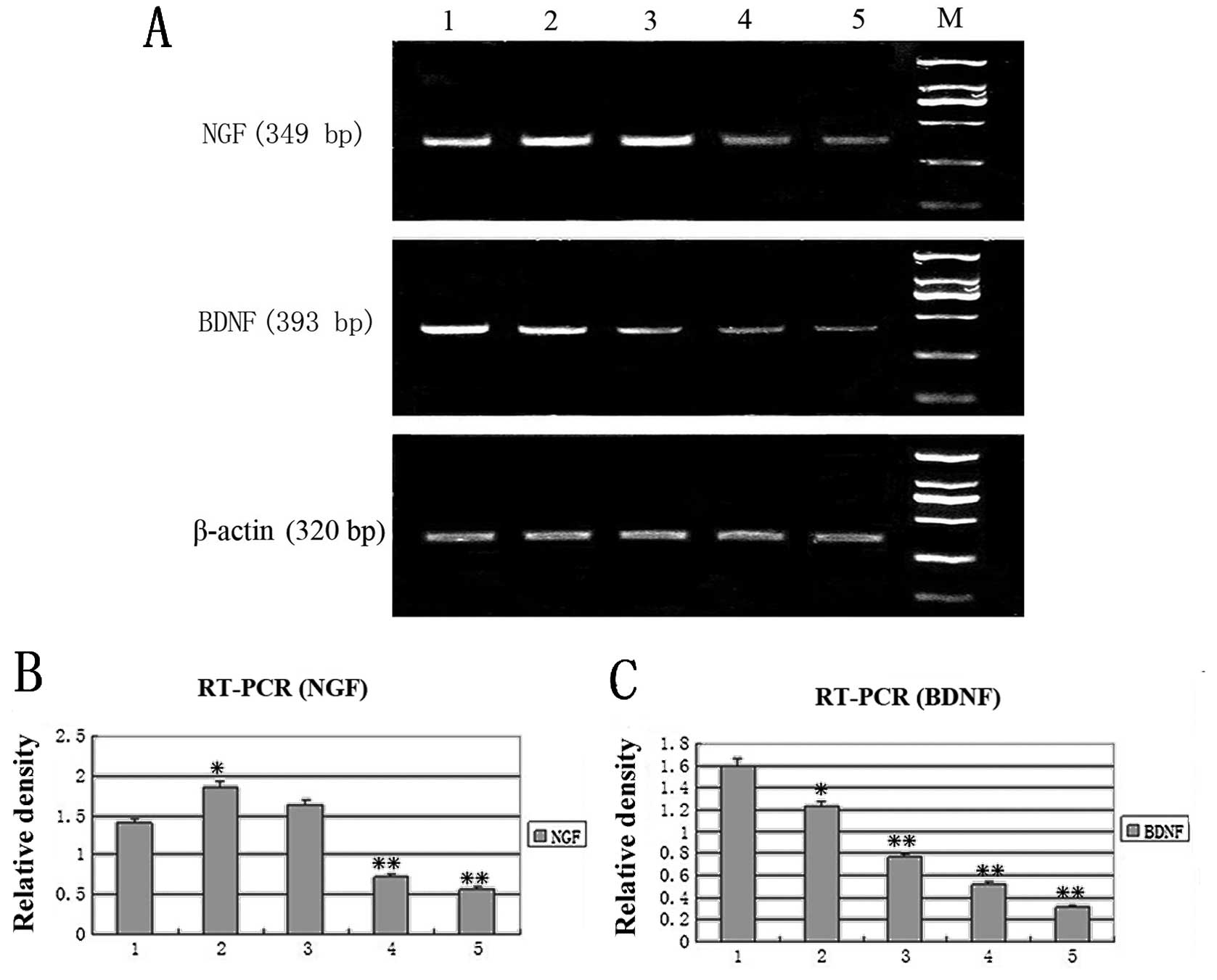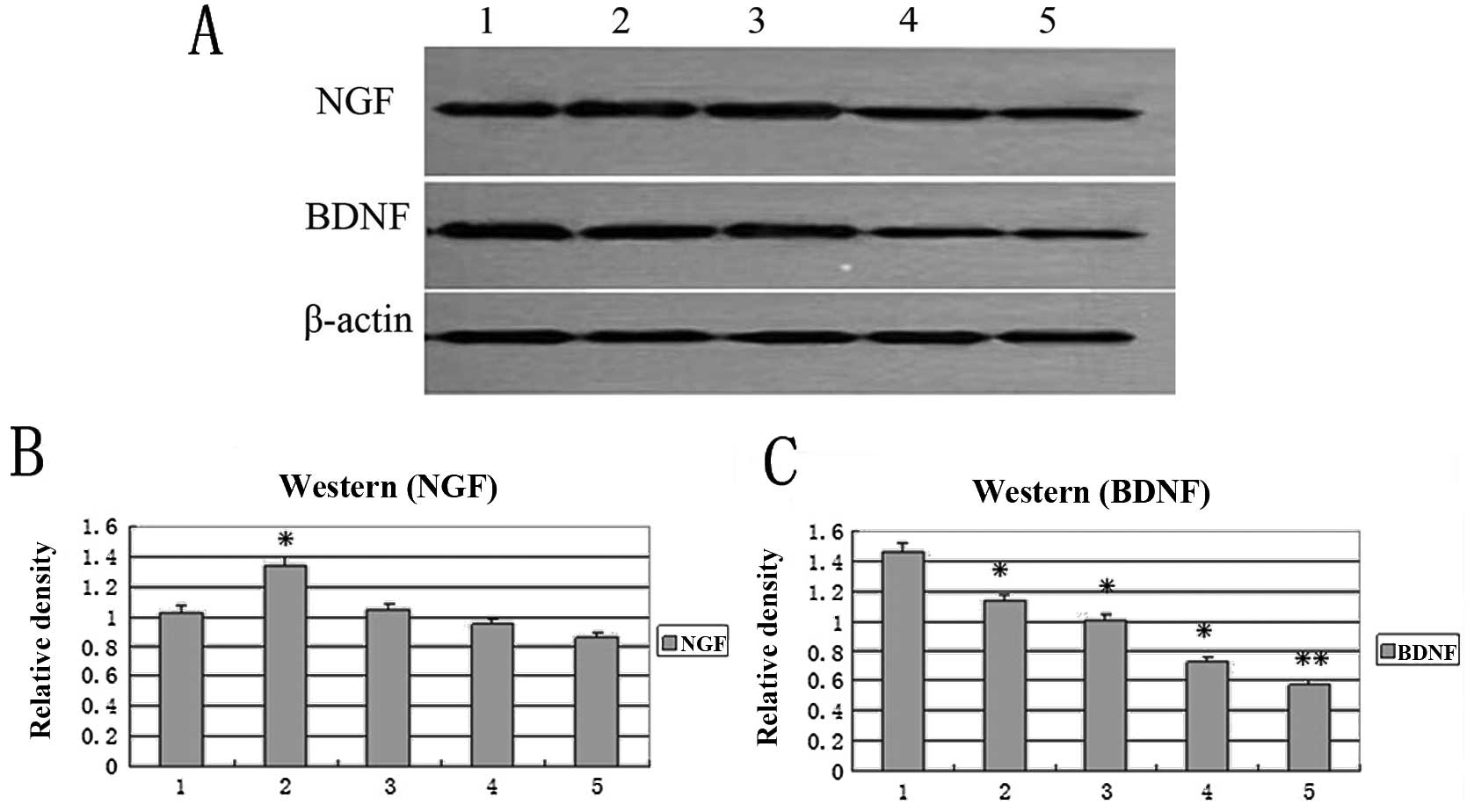|
1.
|
SE MackinnonAL DellonA study of nerve
regeneration across synthetic (Maxon) and biologic (collagen) nerve
conduits for nerve gaps up to 5 cm in the primateJ Reconstr
Microsurg6117121199010.1055/s-2007-10068102352218
|
|
2.
|
S TechangamsuwanR KreutzerM KreutzerI
ImbschweilerK RohnK WewetzerW BaumgärtnerTransfection of adult
canine Schwann cells and olfactory ensheathing cells at early and
late passage with human TERT differentially affects growth factor
responsiveness and in vitro growthJ Neurosci
Methods176112120200910.1016/j.jneumeth.2008.08.030
|
|
3.
|
HC LehmannW ChenR MiS WangY LiuM RaoA
HökeHuman Schwann cells retain essential phenotype characteristics
after immortalizationStem Cells
Dev21423431201210.1089/scd.2010.0513
|
|
4.
|
Y WeiJ ZhouZ ZhengA WangQ AoY GongX
ZhangAn improved method for isolating Schwann cells from postnatal
rat sciatic nervesCell Tissue
Res337361369200910.1007/s00441-009-0836-419639342
|
|
5.
|
A NiapourF KaramaliK KarbalaieA KianiM
MardaniMH Nasr-EsfahaniH BaharvandNovel method to obtain highly
enriched cultures of adult rat Schwann cellsBiotechnol
Lett32781786201010.1007/s10529-010-0230-z20213527
|
|
6.
|
T KomiyamaY NakaoY ToyamaH AsouCA
VacantiMP VacantiA novel technique to isolate adult Schwann cells
for an artificial nerve conduitJ Neurosci
Methods122195200200310.1016/S0165-0270(02)00320-512573478
|
|
7.
|
WE WrightJW ShayMA PiatyszekModifications
of a telomeric repeat amplification protocol (TRAP) result in
increased reliability, linearity and sensitivityNucleic Acids
Res2337943795199510.1093/nar/23.18.3794
|
|
8.
|
JW FawcettRJ KeynesPeripheral nerve
regenerationAnnu Rev
Neurosci134360199010.1146/annurev.neuro.13.1.43
|
|
9.
|
MR FeneleyJW FawcettRJ KeynesThe role of
Schwann cells in the regeneration of peripheral nerve axons through
muscle basal lamina graftsExp
Neurol114275285199110.1016/0014-4886(91)90153-41748202
|
|
10.
|
K HaastertJ GrosskreutzM JaeckelC LadererJ
BuflerC GrotheP ClausRat embryonic motoneurons in long-term
co-culture with Schwann cells - a system to investigate motoneuron
diseases on a cellular level in vitroJ Neurosci
Methods142275284200510.1016/j.jneumeth.2004.09.003
|
|
11.
|
K RothblumRC StahlDJ CareyConstitutive
release of alpha4 type V collagen N-terminal domain by Schwann
cells and binding to cell surface and extracellular matrix heparan
sulfate proteoglycansJ Biol
Chem2795128251288200410.1074/jbc.M408837200
|
|
12.
|
Y ShibuyaA MizoguchiM TakeichiK ShimadaC
IdeLocalization of N-cadherin in the normal and regenerating nerve
fibers of the chicken peripheral nervous
systemNeuroscience67253261199510.1016/0306-4522(95)00015-B7477906
|
|
13.
|
A Baron-Van EvercoorenV Avellana-AdalidF
LachapelleR LiblauSchwann cell transplantation and myelin repair of
the CNSMult Scler315716119979291173
|
|
14.
|
YY ChenD McDonaldC ChengB MagnowskiJ
DurandDW ZochodneAxon and Schwann cell partnership during nerve
regrowthJ Neuropathol Exp
Neurol64613622200510.1097/01.jnen.0000171650.94341.4616042313
|
|
15.
|
A MosahebiB WoodwardM WibergR MartinG
TerenghiRetroviral labeling of Schwann cells: in vitro
characterization and in vivo transplantation to improve peripheral
nerve regenerationGlia34817200110.1002/glia.103511284015
|
|
16.
|
JL RutkowskiCJ KirkMA LernerGI
TennekoonPurification and expansion of human Schwann cells in
vitroNat Med18083199510.1038/nm0195-807584959
|
|
17.
|
TK MorrisseyN KleitmanRP BungeHuman
Schwann cells in vitro. II. Myelination of sensory axons following
extensive purification and heregulin-induced expansionJ
Neurobiol28190201199510.1002/neu.480280206
|
|
18.
|
TK MorrisseyRP BungeN KleitmanHuman
Schwann cells in vitro. I Failure to differentiate and support
neuronal health under co-culture conditions that promote full
function of rodent cellsJ
Neurobiol28171189199510.1002/neu.480280205
|
|
19.
|
XR JiangG JimenezE ChangM FrolkisB KuslerM
SageM BeecheAG BodnarGM WahlTD TlstyCP ChiuTelomerase expression in
human somatic cells does not induce changes associated with a
transformed phenotypeNat Genet21111114199910.1038/50569916802
|
|
20.
|
CP MoralesSE HoltM OuelletteKJ KaurY YanKS
WilsonMA WhiteWE WrightJW ShayAbsence of cancer-associated changes
in human fibroblasts immortalized with telomeraseNat
Genet21115118199910.1038/50639916803
|
|
21.
|
MM OuelletteLD McDanielWE WrightJW ShayRA
SchultzThe establishment of telomerase-immortalized cell lines
representing human chromosome instability syndromesHum Mol
Genet9403411200010.1093/hmg/9.3.40310655550
|
|
22.
|
DJ ArgyleL NasirTelomerase: a potential
diagnostic and therapeutic tool in canine oncologyVet
Pathol4017200310.1354/vp.40-1-112627707
|
|
23.
|
L NasirTelomeres and telomerase:
Biological and clinical importance in dogsVet
J175155163200810.1016/j.tvjl.2007.01.02417398127
|
|
24.
|
V GorbunovaA SeluanovOM
Pereira-SmithEvidence that high telomerase activity may induce a
senescent-like growth arrest in human fibroblastsJ Biol
Chem27876927698200310.1074/jbc.M21294420012496279
|
|
25.
|
LL SmithHA CollerJM RobertsTelomerase
modulates expression of growth-controlling genes and enhances cell
proliferationNat Cell Biol5474479200310.1038/ncb98512717449
|
|
26.
|
JI YoungJM SedivyJR SmithTelomerase
expression in normal human fibroblasts stabilizes DNA
5-methylcytosine transferase IJ Biol
Chem2781990419908200310.1074/jbc.M30168520012665523
|
|
27.
|
X JinJS LeeS KwakSY LeeJE JungTK KimC XuZ
HongZ LiSM KimEstablishment and characterization of three immortal
bovine muscular epithelial cell linesMol
Cells212933200616511344
|
|
28.
|
M OudegaXM XuSchwann cell transplantation
for repair of the adult spinal cordJ
Neurotrauma23453467200610.1089/neu.2006.23.45316629629
|
|
29.
|
R HeumannS KorschingC BandtlowH
ThoenenChanges of nerve growth factor synthesis in nonneuronal
cells in response to sciatic nerve transectionJ Cell
Biol10416231631198710.1083/jcb.104.6.16233034917
|
|
30.
|
A AchesonPA BarkerRF AldersonFD MillerRA
MurphyDetection of brain-derived neurotrophic factor-like activity
in fibroblasts and Schwann cells: inhibition by antibodies to
NGFNeuron7265275199110.1016/0896-6273(91)90265-21873030
|
|
31.
|
N OffenhauserR Böhm-MatthaeiP TsoulfasL
ParadaM MeyerDevelopmental regulation of full-length trkC in the
rat sciatic nerveEur J
Neurosci7917925199510.1111/j.1460-9568.1995.tb01079.x7613627
|
|
32.
|
H ZhuF LiWJ YuWJ WangL LiLD WanY LeWL
DingEffect of hypoxia/reoxygenation on cell viability and
expression and secretion of neurotrophic factors (NTFs) in primary
cultured schwann cellsAnat Rec
(Hoboken)293865870201010.1002/ar.2110520186961
|
|
33.
|
N OkaT KawasakiK MizutaniH SugiyamaI
AkiguchiHypoxia-inducible factor 1alpha may be a marker for
vasculitic
neuropathyNeuropathology27509515200710.1111/j.1440-1789.2007.00817.x18021370
|















